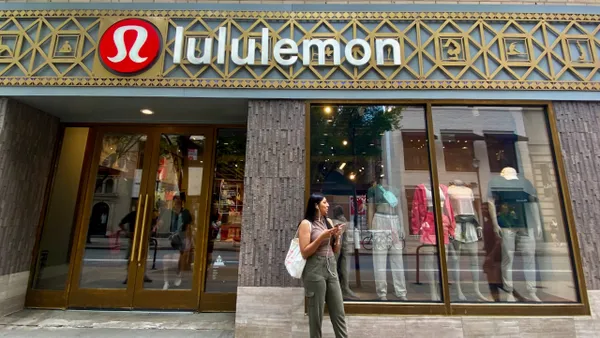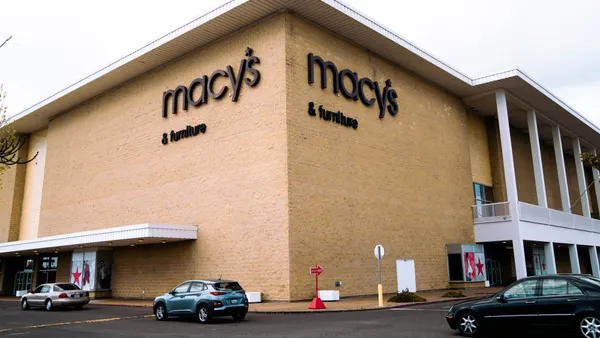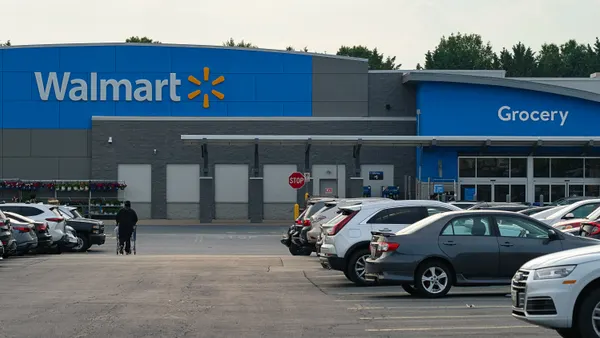Picture this: You're shopping for groceries when your phone buzzes with a personalized coupon for the exact pasta sauce you're looking at. It’s just the nudge you needed to make the purchase. Behind that ideal lies a complex web of sensors, cameras, and AI systems. It's within reach for most retailers, so long as their technology infrastructure can handle it.
Retailers are under pressure to meet customer expectations for faster, better service while making operations more efficient on increasingly tight margins. Many of them are choosing technology investments to help them get there, which is why the global market for digital transformation in retail is set to grow at a 17.32% CAGR from $285.76B in 2025 to $635.12B in 2030. Over nine in 10 retail IT leaders are choosing AI as the top technology to help them meet these challenges.
Get big results by thinking small
AI is helping retailers achieve a long-standing industry goal: mass personalization. Hyper-targeted digital engagement gets them closer to one-one segmentation, where they would communicate individually with customers, offering them tailored messaging.
"Personalization, the idea that both agentic AI as well as traditional AI can understand and respond to a consumer's behavior, is powerful," says Richard Newman, chief strategy officer at Acumera. "You can track a customer through a store, gather data associated with their journey, and come to conclusions."
Those conclusions might be a simple prediction that the customer in the salty snacks aisle is headed to the beer aisle next, but that can be powerful enough. You can also marry that data with other metrics for use cases like dynamic pricing.
Innovation meets infrastructure
These goals are lofty, and promise big payoffs in areas such as revenue generation, customer retention, and theft reduction. But to work, they require digital upgrades that could have negative impacts on network performance, particularly at the store edge.
The rich media and content that retailers need for richer in-store advertising takes low-latency data connectivity to deliver the best experience. Cameras to watch in-store customer movements need higher performance to process that data. The computer vision and AI-powered personalization algorithms that make the back-end magic happen chew through data. Add information collected from IoT systems, now used to do everything from adjusting chiller temperature to detecting low stock on retail shelves, and you have a data tsunami on your hands.
Retailers rarely process this data purely in the cloud, Newman points out. Cloud-only processing risks creating bottlenecks, along with cost issues. Retailers running cloud-side AI inferencing will likely run into 'cloud shock' from rising fees. Instead, smart retailers juggle workloads between the cloud and the edge, where they use in-store computing to handle low-latency jobs.
The need for edge computing brings its own challenges, Newman cautions. Retailers still need to manage distributed infrastructure. Unless they do it right, handling network functionality in-store creates connectivity, security, and device orchestration issues. Management missteps here could impact reliability and compliance.
"Greater complexity can often lead to less reliability, along with higher cost," he warns. "To get four nines of reliability in networking across what might be thousands of locations is virtually impossible for today's network technology."
It's also difficult to manage security across a vast distributed fleet of edge hardware and software. Patching those assets and maintaining their configurations becomes challenging across thousands of locations, especially if networks don't operate as intended.
The answer lies in the consolidated edge
Like any challenge, once retailers understand the issue, they can solve it with the right tool. Consolidated edge architecture is Acumera's approach to streamlining the whole process.
"Consolidated edge uses edge computing both for underlying business applications like point of sale while also running the required networking and security components on the same platform," says Newman.
The same appliance that runs a store's POS system can also take care of its security, network management, and device orchestration. That reduces complexity, enhances agility, and supports scalable innovation without compromising control.
The move away from fixed, single-function systems eliminates multiple appliances handling different applications in the store. It declutters the physical space while also increasing reliability. Acumera can then administer these appliances and the virtualized software running on them over a software-defined network to keep them secure and performing well.
Putting it into practice
This edge computing scenario sounds utopian, but getting there isn't as difficult as you might think. The hardest part is easy: delivering appliances to each store and plugging them in.
From there, zero-touch provisioning gets locations set up quickly even with no in-house expertise in-store. Acumera uses programmatic updates, engineered via professional software development pipelines, to download and update software applications and IT infrastructure functions, without local staff having to even be aware that it's happening.
Retailers can no longer afford to treat network and compute infrastructure as an afterthought. As digital transformation looms, it's now a differentiating feature. Edge computing and device orchestration offer them the chance to tame their IT, making it more manageable, functional, and flexible at a time when they are starting to need it more than ever.










